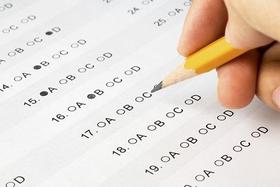Serving 311 students in grades Prekindergarten-6, Dr Walter Cooper Academy ranks in the bottom 50% of all schools in New York for overall test scores (math proficiency is bottom 50%, and reading proficiency is bottom 50%).
The percentage of students achieving proficiency in math was 6-9% (which was lower than the New York state average of 52%). The percentage of students achieving proficiency in reading/language arts was 15-19% (which was lower than the New York state average of 49%).
The student-teacher ratio of 12:1 was higher than the New York state level of 11:1.
Minority enrollment was 98% of the student body (majority Black), which was higher than the New York state average of 60% (majority Hispanic and Black).
Top Rankings
Dr Walter Cooper Academy ranks among the top 20% of public schools in New York for:
Category
Attribute
Percent Eligible For Free Lunch
School Overview
Grades Offered
Grades Prekindergarten-6
(Supplemental Virtual)
(Supplemental Virtual)
Total Students
311 students
Gender %
Total Classroom Teachers
26 teachers
School Rankings
Overall Testing Rank
#4277 out of 4346 schools
(Bottom 50%)
(Bottom 50%)
Math Test Scores (% Proficient)
6-9%
52%
Reading/Language Arts Test Scores (% Proficient)
15-19%
49%
Science Test Scores (% Proficient)
50-59%
78%
Student-Teacher Ratio
12:1
11:1
American Indian
n/a
1%
Asian
1%
10%
Hispanic
18%
30%
Black
75%
16%
White
2%
40%
Hawaiian
n/a
n/a
Two or more races
4%
3%
All Ethnic Groups
Participates in the National School Lunch Program (NSLP)
Yes
Eligible for Free Lunch
86%
54%
Eligible for Reduced Lunch (17-18)
1%
5%
School Statewide Testing
School District Name
Source: National Center for Education Statistics (NCES), NY Dept. of Education
Profile last updated: 02/09/2025
Frequently Asked Questions
What is Dr Walter Cooper Academy's ranking?
Dr Walter Cooper Academy is ranked #4277 out of 4,346 schools, which ranks it among the bottom 50% of public schools in New York.
What percent of students have achieved state testing proficiency in math and reading?
6-9% of students have achieved math proficiency (compared to the 52% NY state average), while 15-19% of students have achieved reading proficiency (compared to the 49% NY state average).
How many students attend Dr Walter Cooper Academy?
311 students attend Dr Walter Cooper Academy.
What is the racial composition of the student body?
75% of Dr Walter Cooper Academy students are Black, 18% of students are Hispanic, 4% of students are Two or more races, 2% of students are White, and 1% of students are Asian.
What is the student-teacher ratio of Dr Walter Cooper Academy?
Dr Walter Cooper Academy has a student ration of 12:1, which is higher than the New York state average of 11:1.
What grades does Dr Walter Cooper Academy offer ?
Dr Walter Cooper Academy offers enrollment in grades Prekindergarten-6 (Supplemental Virtual).
What school district is Dr Walter Cooper Academy part of?
Dr Walter Cooper Academy is part of Rochester City School District.
In what neighborhood is Dr Walter Cooper Academy located?
Dr Walter Cooper Academy is located in the 19th Ward neighborhood of Rochester, NY. There are 6 other public schools located in 19th Ward.
Recent Articles

Making the Most of Parent-Teacher Conferences
A practical guide for parents and educators to maximize impact during parent-teacher conferences in 2025

Back-to-School Checklist for Public School Parents 2025
Stay prepared for 2025 with this comprehensive back-to-school checklist for public school parents.

Advocating for Your Child in Public School (Without Overstepping)
Learn respectful, effective strategies for advocating your child鈥檚 needs in public school without undermining teachers or crossing boundaries.





